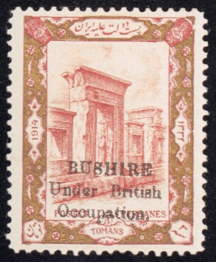Because of its strategic location on the Persian Gulf, the Iranian city of Bushehr has been an important seaport for centuries. In the eighteenth century, the British East India Company had a trading post at what they called Bushire, and until 1913 the British agent for the Persian Gulf was stationed there. It is only in recent decades, however, that Bushehr has become known for its nuclear industry. Now, Iran has announced that it has completed—with Russian help—its long planned Bushehr reactor, an event it has marked by an elaborate dedication ceremony and claims of victory against its western enemies. But questions remain about Bushehr’s strategic importance—and whether the West should be worried about it.
Although they have controlled Bushehr since the departure of the British in the early twentieth century, the Iranians took little interest in the city until the 1960s. In 1975, the Shah decided that one of his nuclear power plants was going to be located some twelve kilometers from the city. There were to be several reactors, the first in Iran. Perhaps he wanted to help the development of the city. In fact, this is far from an ideal place to build a reactor. The atmosphere is hot, briny, and humid, with summer temperatures than can rise to 120 degrees. But the German firm of Kraftwerk-Union, a division of Siemens, was hired to build two power-producing pressurized light water reactors at a cost of more than four billion dollars. (The Germans stipulated in the contract that they would not have to work in the summer.)
Both reactors were more than half done at the time of the Iranian Revolution in 1979. The Ayatollah Khomeini stopped construction, however, asserting that nuclear power was “anti-Islamic.” Later the Islamic regime changed its mind, but the Germans refused to continue and during the Iran-Iraq war the reactors were repeatedly attacked by Iraqi air strikes. In 1995 the Russian Ministry of Atomic Energy signed an agreement to help Iran complete the project with a new reactor of its own design.
The design they chose to build is what the Russians call a VVER-Water-Water Energetic Reactor. It is a so-called light-water pressurized reactor, which makes use of ordinary water both to act as a coolant and to slow down the neutrons so as to enhance fission, a process called moderation. Since ordinary water is used as a moderator, low enriched uranium must be used in the fuel elements; light water moderators are less efficient since they absorb some neutrons, so the uranium is enriched with fissionable uranium-235. Since the Iranians have neither the necessary amount of enriched uranium nor the technology to make the fuel elements, they are supplied by the Russians. The reactor is designed to produce about a thousand megawatts of electric power—a standard capacity for a power reactor. (By comparison a typical coal power plant produces between 600 and 700 megawatts.) The water is kept under pressure in the primary circuit to keep it from boiling; but this water heats water in the secondary circuit, which it turns into the steam that drives the electricity- producing turbines.
The design is relatively safe since if the reactor loses its water coolant it also loses its moderator. Thus the neutrons are no longer slowed down which tends to diminish the fission reactions. A reactor like this is designed to operate for at least thirty five years. It does produce plutonium as a byproduct but its design does not require the fuel elements to be removed frequently as one would in a reactor intended for plutonium production, and the Russians have in any case agreed to remove the spent fuel rods, thus seemingly avoiding the prospect of Iranian reuse in a weapons-making program. By all appearances, the Bushehr reactor can be regarded as part of a legitimate electric power program.
But with the Iranians things are never quite as they appear. This reactor has been a pawn, or more aptly a major piece, in Iran’s nuclear chess game with the West. When the Russians wanted to put pressure on the Iranians, they stopped or slowed construction. Now, to the consternation of the United States, they have allowed it to be completed. One suggestion is that the Russians wanted to express their annoyance that the United States put additional sanctions on the Iranians over and above those Moscow had agreed to.
Whatever the case, while I have warned about other aspects of Iran’s nuclear program in recent months, this reactor should not be the casus belli that provokes military actions by the Israelis, as some have suggested. The real concerns about Iran’s nuclear ambitions lie elsewhere: in the possibility that, from its various nuclear facilities, it may produce enough highly-enriched uranium to make a bomb. If Tehran chooses to do so, this bomb fuel will not come from Bushehr. Far more concerning are the uranium enrichment facility at Natanz, and the heavy water reactor at Arak, which is suitable for making plutonium.
Advertisement
The present status of Iran’s efforts to enrich uranium to the high levels necessary to make a nuclear weapon remains unclear. It may be that the Iranians are having difficulty with their centrifuges or it may be that they have secret programs we don’t yet know about. But for the moment, Bushehr should not be our principal worry.



